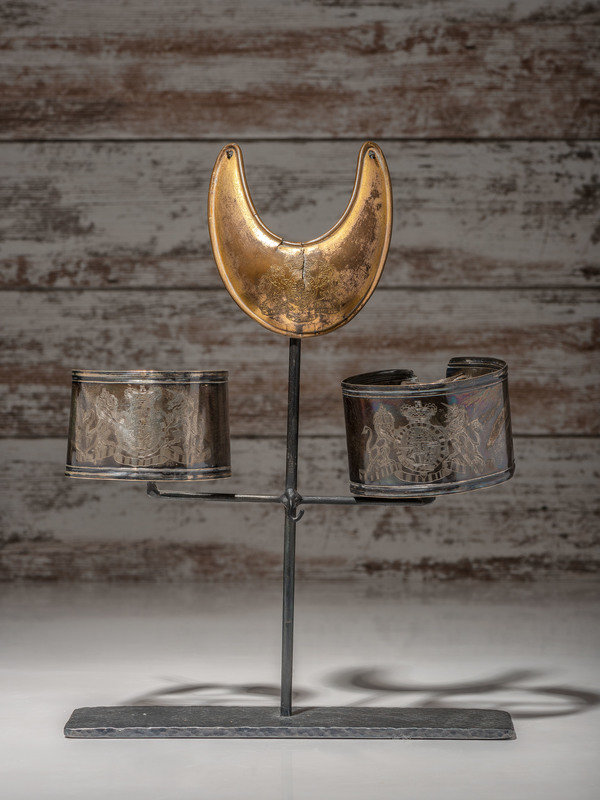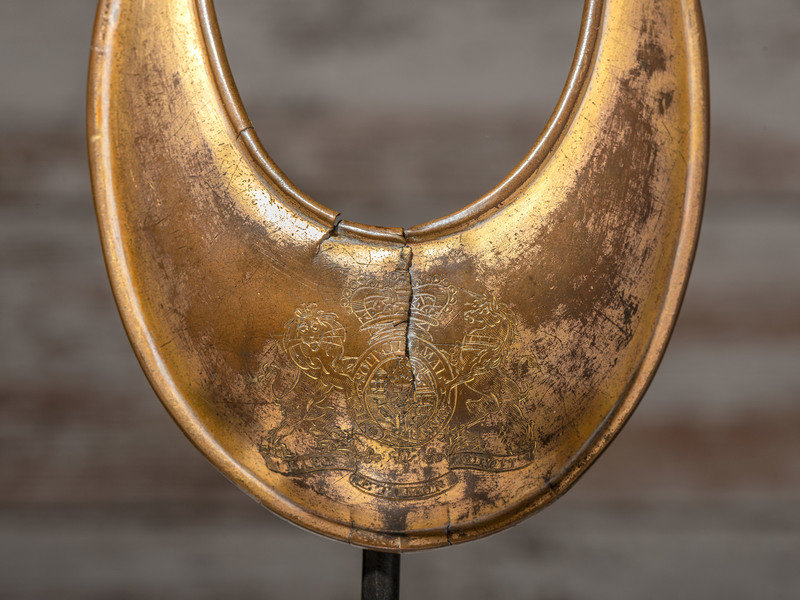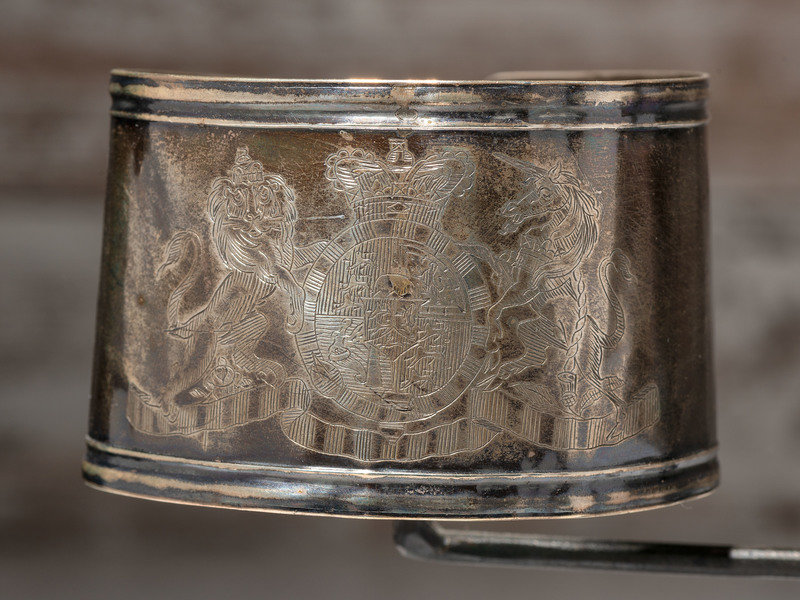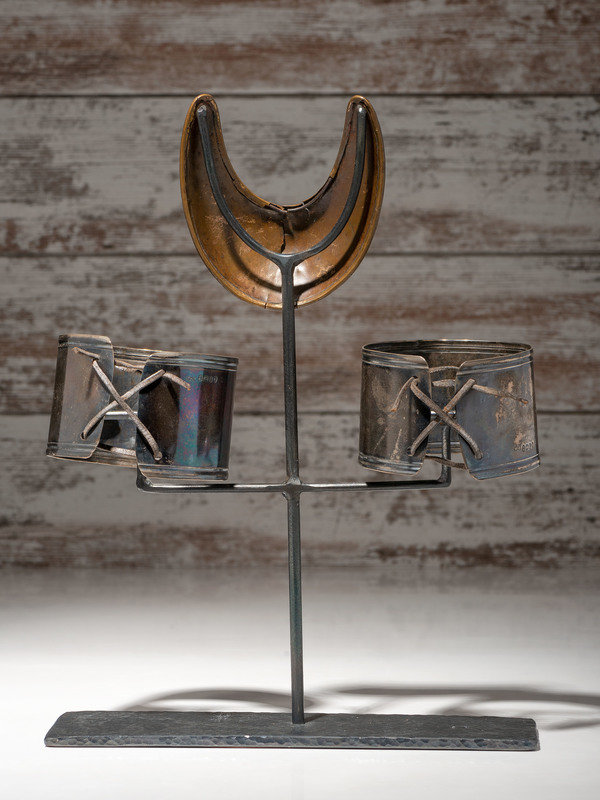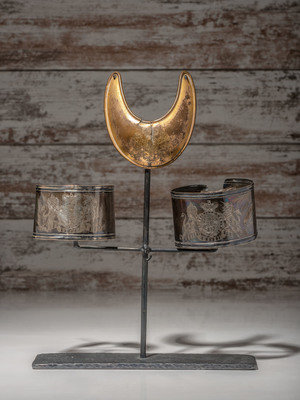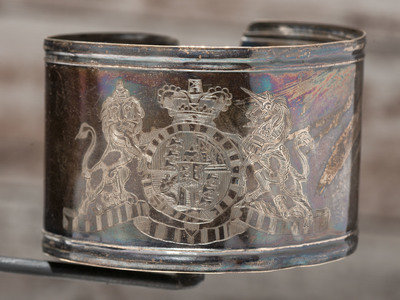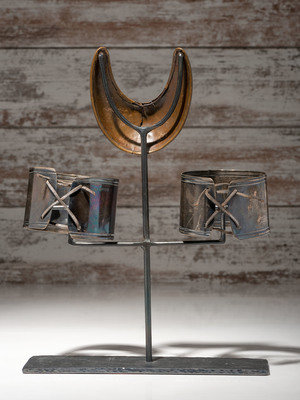Condition Report
Contact Information
Auction Specialist
Lot 3
Lot Description
lot of 3, includes:
William Bateman (London, 1774-1850) Sterling Silver Armbands
each hallmarked with the standard mark (sterling), city mark (London), date letter k (1825) and l (1826), duty mark (King George IV), and maker's mark; delicately engraved with the royal arms, height 2-1/4 inches x diameter 3-1/2 inches
AND
a regulation British army gorget engraved with royal arms, with motto, length 4-1/2 inches x width 4 inches
The silver armbands were commissioned by George III for presentation to Native chiefs in gratitude for the aid given during the War of 1812.
PUBLISHED:
Sovereignty Gifts (Hoover and Brasser 2020: pg. 6, 8, 20-23)
In a treaty of 1798 by which Ojibwas ceded the territory around Penetanguishene (Penetang) Harbour to the crown, the name “Aasance” appears beside the mark of a head man of the otter clan. He was probably the father of John Aisance, described as “Young Aisaince” in the account of a council meeting conducted by officials of the Indian Department in 1811. At this ceremony, land for a “wider and better path” to the king’s “western children” was requested. John Aisance agreed, but asked that his people be allowed to maintain their gardens at Penetanguishene Harbour until the plots were needed by whites.
Aisance may have served the crown in the War of 1812, for it was noted in later years that he possessed a military medal. He was one of three principal men who in 1815 ratified a treaty ceding a 250,000-acre tract between Kempenfelt and Nottawasaga bays.
Aisance served the crown loyally in the Upper Canadian uprising of 1837, leading 21 warriors into the field. He did so notwithstanding his community’s sense of betrayal upon finding itself landless after the surrender of the tract from Coldwater to the Narrows, one of several territorial cessions secured from Indians by Lieutenant Governor Sir Francis Bond Head in 1836. Evidence of fraud in the transaction is to be found in an address made six years later to Sir Charles Bagot by Aisance and several other chiefs. They asserted that “when Sir F Bond Head insisted on our selling this Land . . . we were not made sensible of the full purport, so that we knew not the nature of the bargain.”
Aisance’s people remained unsettled until 1842, when land was made available for them on Beausoleil Island, in Georgian Bay. As early as 1844, however, the chief sent a group of Potawatomi Indians who were closely associated with him to hold territory on nearby Christian Island in case it should be needed by his people. This precaution indeed proved sound, since the soil at Beausoleil was not fertile. Aisance’s band thus settled at Christian Island in 1856, where they remain still.... Throughout his life, he had seen his authority as a hereditary chief increasingly undermined by government and ecclesiastical officials who sought to direct the lives of Indian people.
Anthony J. Hall, “AISANCE, JOHN,” in Dictionary of Canadian Biography, vol. 7, University of Toronto/Université Laval, 2003–, accessed March 7, 2023, http://www.biographi.ca/en/bio/aisance_john_7E.html.
This lot is located in Cincinnati.
